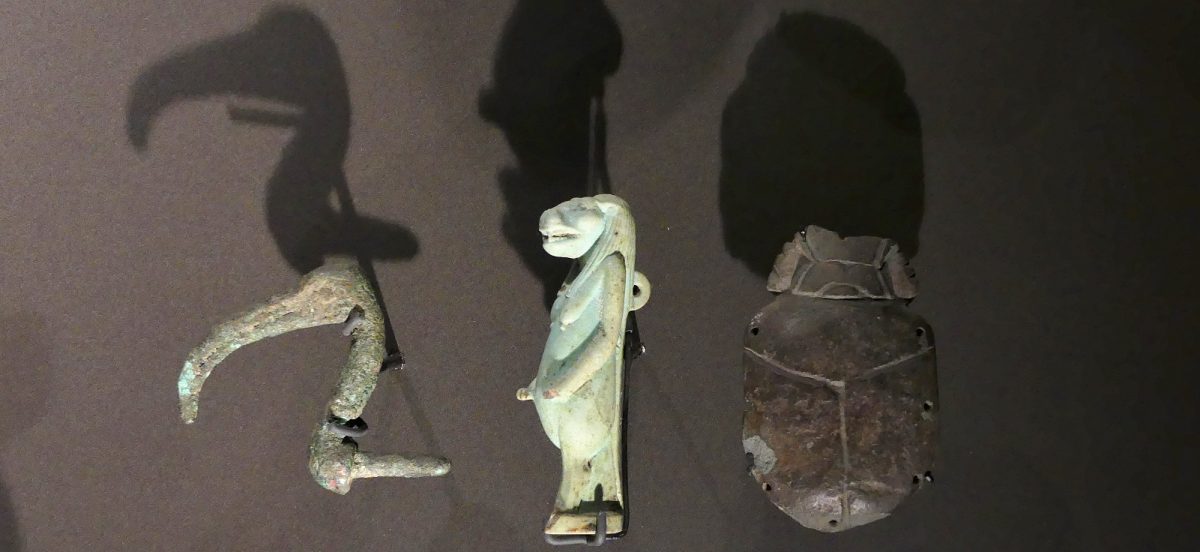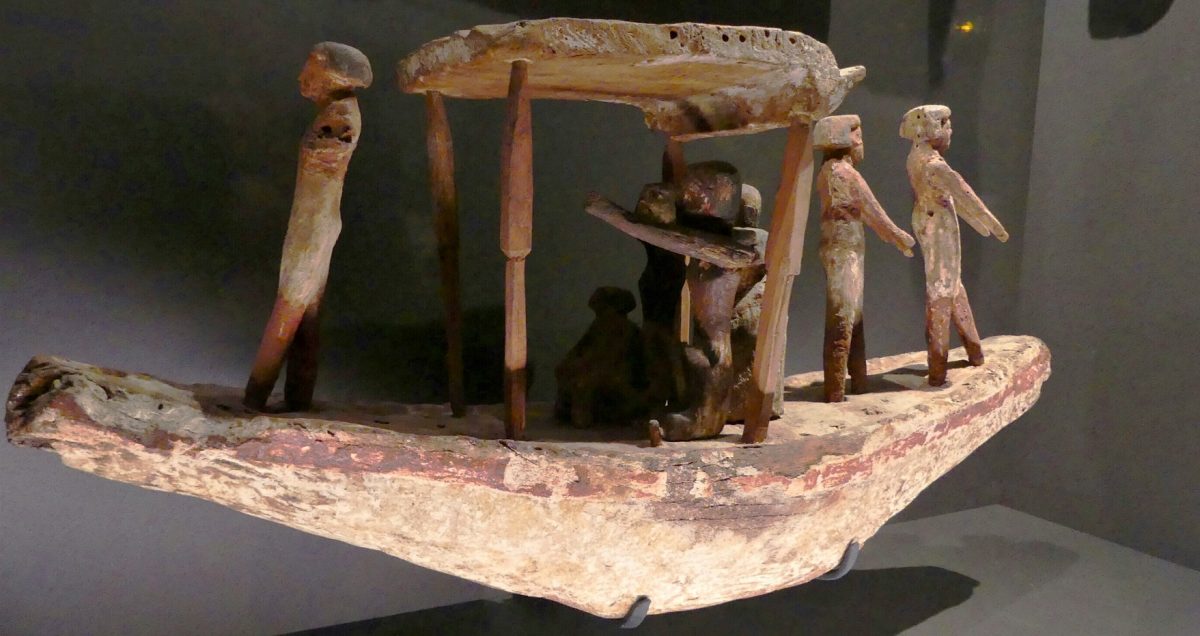Le Museum of the Americas-Auch offers its visitors to take a ticket for a journey through time and space, and reveals to them the treasures ofEgypt of the Pharaohs .
The curator's legacy
It was at the beginning of the XNUMXth century that Charles Palanque, after having carried out several "campaigns" in Egypt, returns to Auch, his hometown, where he was appointed curator of museum. Member of the French Institute of Archeology in Cairo, before his return to the Gers, he participated in excavations around Abu-Roash, El Deir, the Coptic monastery of Baouit and in the necropolis of Assiout. It constitutes a egyptian collection composed of more than 300 parts that he bequeaths to the city ofAuch.
Mummiform sarcophagus
Polychrome stuccoed wood - Ptolemaic period (331 to 30 BC)
The rite of mummies in Pharaonic Egypt
From the third millennium BC. AD, beliefs related to an afterlife spread to Egypt. Reserved during the Old Kingdom for kings and then for notables, the mummification of bodies was intended to ensure the Bâ (soul) and Ka (vital energy) of the deceased to return to a body preserved for eternal life.
Once the viscera have been removed and placed in canopic jars (except the heart considered to be the seat of consciousness), the body was washed and the abdomen filled with scented substances (myrrh, cinnamon). Once closed, it was dried in natron (natural salt) for 70 days then wrapped in strips of flax stuck to the gum.
The mummy was then locked in a sarcophagus which gave her, along with the tomb, the ultimate protection she needed. The Magic formulas inscribed on the walls allowed him to complete his journey to the afterlife and ensured his survival.

The sarcophagus
The upper part of the cover represents the idealized face of the deceased wearing the traditional wig, his neck adorned with a large ousekh collar. On the top of the body we can guess the drawing of a scarab amulet winged and below the presence of the goddess isis winged to protect the deceased.
On the back of the coffin, the very well-preserved painting shows the goddess Maat (of justice and truth) recognizable by the ostrich feather she wears on her head. It is this same feather that allows the goddess to weigh the hearts of the dead, seat of conscience for the Egyptians, during the judgment scene. If the heart is equal to the pen, the deceased has the right to access the “fields of Ialou” (paradise). If it is heavier or too light, the deceased is eaten by the “Devourer”. In the representation, Maat, who protects the deceased and ensures him a rebirth in the afterlife, is surrounded by two goddesses-serpents representing the tutelary goddesses of Upper Egypt (Nekhbet) wearing the white crown, and Lower Egypt (Ouadjet) girded with the red crown.

The myth of Osiris
Osiris ruled the Earth with kindness and justice. His brother Seth, wanting to take his place, thelocked in a sarcophagus which he threw into the Nile. Isis, his wife, found the corpse but could not for a long time conceal it from Seth who, determined to make it disappear, cut his brother's body into 14 pieces which he scattered throughout Egypt. Resuming her quest, Isis found the members of her husband and appealed to the dog-headed god Anubis to help her rebuild the body, then to her sister Nephthys to bring it back to life.
Thus resurrected Osiris would become the ruler of the kingdom of the dead and rebirth, and preside over the tribunal which decided the admission of the deceased to the afterlife. After a long fight against Seth, who wanted to dominate Egypt, Horus, the son of Osiris, would reign over the world of the living and Anubis would become the boss of the embalmers.
In the iconography, Osiris is represented in the form of a mummy, arms crossed on the chest carrying the scepter and the whip, and wearing the crown of Upper Egypt framed by two ostrich feathers.
LEARN MORE
Website : Museum of the Americas - Auch
Pricing: Full price: € 6 / Reduced price: € 3 / Free for children under 18
Address: 9 rue Gilbert Brégail - 32000 Auch
Phone: 05 62 05 74 79

 "/>
"/>